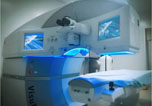- Over 55,000 LASIK and cataract procedures (including on over 4,000 doctors)
- The FIRST center in TN to offer Laser Cataract Surgery
- Introduced bladeless all-laser LASIK to the state
- Implanted the state's first FOREVER YOUNG™ Lens
- The first surgeons in the US to perform a new Intacs surgery to treat keratoconus
- Helped patients from 40 states and 55 countries
- International referral center for cataract surgery and LASIK complications
- Read Dr. Wang's book: LASIK Vision Correction
Why did you decide to have LASIK? Why did you choose Dr. Wang? How has your life changed since your LASIK procedure?
What is your advice for people considering LASIK?
Click to read more
| Home | Print This Page |
Comparison of intraocular lens power calculation methods after myopic laser refractive surgery without previous refractive surgery data
Journal of Cataract & Refractive Surgery Volume 39, Issue 9 , Pages 1327-1335, September 2013
Ruibo Yang, MD, Annie Yeh, OD, Michael R. George, MD, Maria Rahman, BS, Helen Boerman, OD, FAAO, Ming Wang, MD, PhD
From Tianjin Medical University Eye Hospital and College of Optometry (Yang), Tianjin, China; Wang Vision Cataract and LASIK Center (Yeh, Boerman, Wang) and Tylock Eye Care and Laser Center (George), Nashville, and the University of Tennessee (Rahman), Knoxville, Tennessee, USA
Purpose
To compare the accuracy of intraocular lens (IOL) power calculation methods for post-myopic excimer laser surgery patients without previous refractive surgery data using the Holladay IOL Consultant Program and the American Society of Cataract and Refractive Surgery (ASCRS) IOL Power Calculator.
Setting
Wang Vision Cataract and LASIK Center, Nashville, Tennessee, USA.
Design
Case series.
Methods
Eight methods were used to calculate IOL power: Holladay 2 partial coherence interferometry (PCI)-K, Holladay 2 FlatK, Wang-Koch-Maloney, Shammas No-History, Haigis-L, ASCRS-Average, ASCRS-Min, and ASCRS-Max. The optimum IOL power corresponding to the target refraction was back-calculated using the stable post-cataract surgery refraction and implanted IOL power. Using the optimum IOL power, the predicted IOL power error and the resultant refractive error with each method were calculated and compared.
Results
The Holladay 2 FlatK method was most accurate for IOL power calculation, followed by the Holladay 2 PCI-K, ASCRS-Min, Wang-Koch-Maloney, ASCRS-Average, Shammas No-History, Haigis-L, and ASCRS-Max. Statistically significant differences were observed between Holladay 2 FlatK and Holladay 2 PCI-K (P<.05), Wang-Koch-Maloney and ASCRS-Average (P<.05), and Haigis-L and ASCRS-Max (P<.01). No statistically significant differences were observed between the Holladay 2 PCI-K, ASCRS-Min, and Wang-Koch-Maloney or between the ASCRS-Average, Shammas No-History, and Haigis-L (both P>.05).
Conclusions
The Holladay 2 FlatK method provided the most accurate IOL power in eyes without previous myopic laser surgery data. If the Holladay IOL Consultant Program is unavailable, the ASCRS methods can be used; the ASCRS-Min represents the most accurate method.
Financial Disclosure
No author has a financial or proprietary interest in any material or method mentioned.
Lance Kugler, MD, Amy Waymire, OD, Nic Hord, and Andrew Langston provided data collection and paper review.
Click here to view the full article.
PII: S0886-3350(13)00522-1
doi:10.1016/j.jcrs.2013.03.032
© 2013 ASCRS and ESCRS. Published by Elsevier Inc. All rights reserved.
Our new texbooks
A 501c(3) charity that has helped patients from over 40 states in the US and 55 countries, with all sight restoration surgeries performed free-of-charge.




















